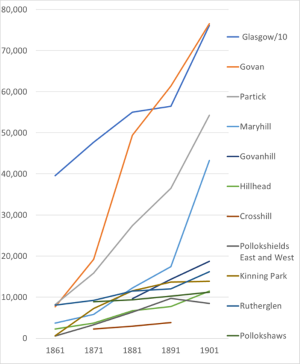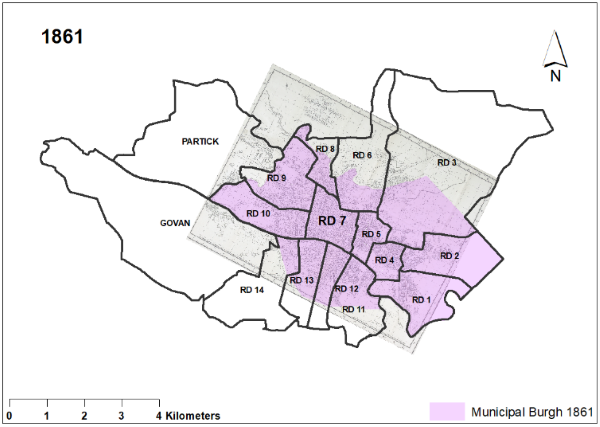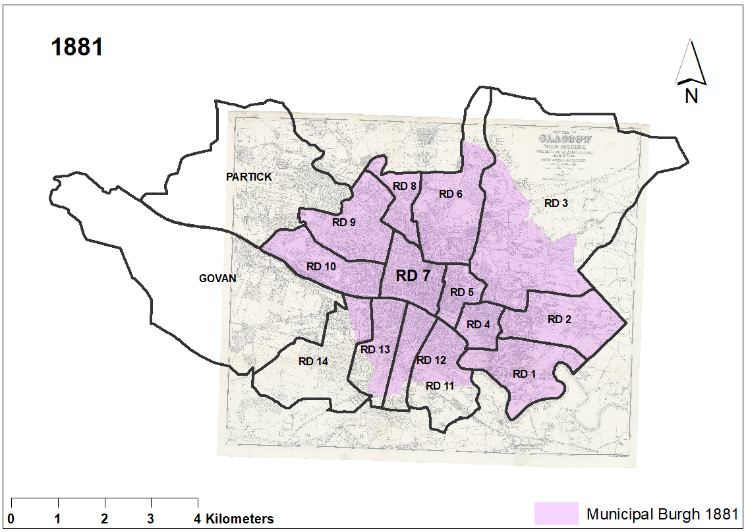Population Growth
Accelerating economic growth and population increase in the later nineteenth century caused unprecedented demand for more space. The population of Glasgow Municipal Burgh grew from about 400,000 in 1861 to 550,000 in 1881 and more than 750,0000 by 1901.
High density tenement buildings allowed large numbers of people to live and conduct business in close proximity in the city centre. The physical extent of Glasgow also expanded to accommodate new suburban development.
But the Burgh boundary did not yet include the most rapidly expanding suburbs. Notably it excluded Govan and Partick, the centres of shipbuilding and heavy industry. These suburbs were growing even faster than the city centre as shown by the graph below.

Population increase in Glasgow and suburbs between 1861 and 1901



